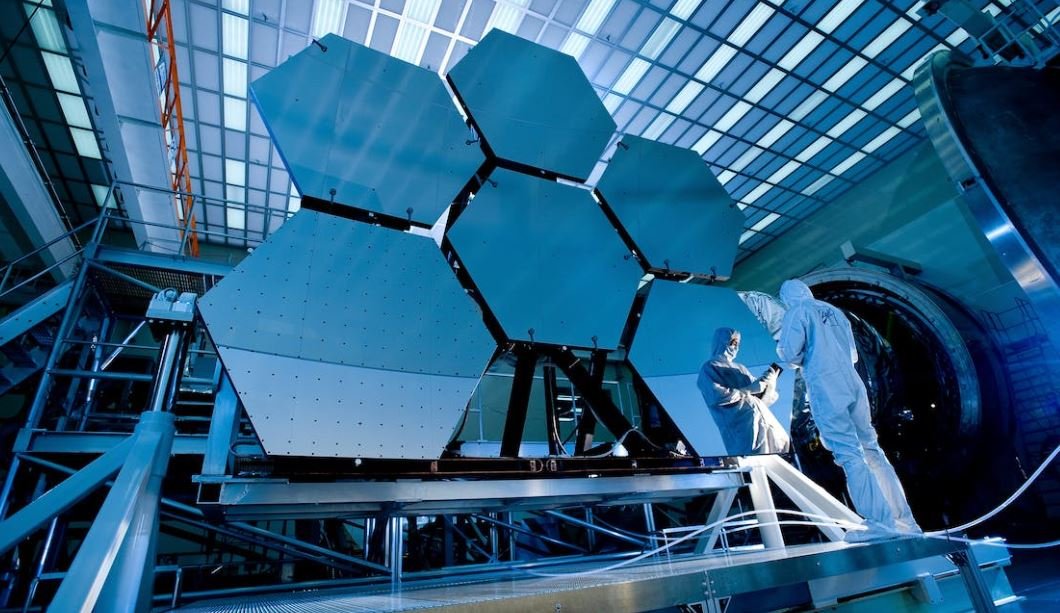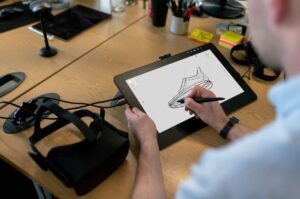Footage Log
Footage Log is a valuable tool for managing video content by keeping track of relevant information about each recorded video fragment.
Key Takeaways:
- A Footage Log helps organize and manage video content effectively.
- It allows the tracking of information related to each video fragment.
- Footage logs assist in quickly locating specific footage within a large collection.
- Tags and metadata enhance searchability and categorization.
When dealing with large amounts of recorded video content, maintaining an organized record becomes crucial. A Footage Log provides a comprehensive overview of each video fragment, allowing easy navigation and quick access to desired footage. It includes essential details like filenames, timestamps, durations, or any other metadata deemed relevant for better management and retrieval of videos. With a Footage Log, finding specific footage within a vast collection becomes a hassle-free task, saving time and effort. *Keeping such detailed records can also help identify patterns or trends in the video content.*
The Benefits of Using a Footage Log
- Efficient management and organization of video content.
- Quickly find and access specific footage.
- Identify patterns or trends in the recorded videos.
- Enhanced searchability and categorization through tags and metadata.
- Seamless collaboration among multiple users.
A Footage Log serves as a centralized repository for information about recorded video fragments. By maintaining a structured log, one can easily filter and sort the videos based on various attributes, such as date, time, location, or any specific metadata associated with the videos. Adding descriptive tags or keywords further enhances the searchability and categorization of the video collection. Storing metadata like camera details, resolution, or frame rate can prove immensely helpful in filtering the footage based on technical specifications.
Examples of Metadata Attributes for a Footage Log
| Attribute | Description |
|---|---|
| Date | The date when the video was recorded. |
| Time | The time of day when the video was recorded. |
| Location | The physical location where the video was recorded. |
A Footage Log can also be enriched with additional details like descriptions, annotations, or notes to provide more context to the video fragments. This additional information allows users to search for videos based on specific events or incidents mentioned in the descriptions. Collaborating with multiple users is made seamless through the central Footage Log, where users can add comments or tag each other for easy communication regarding specific footage.
How a Footage Log Streamlines Video Content Management
- Create a standardized template for the Footage Log.
- Enter relevant details for each video fragment, such as filename, timestamp, and duration.
- Add descriptive tags or keywords to enhance searchability.
- Include additional metadata attributes based on requirements.
- Regularly update and maintain the Footage Log.
A Footage Log simplifies video content management by providing a structured approach to handle recorded videos. By creating a standardized template, all relevant information can be captured consistently, ensuring easy retrieval of videos in the future. The regular updating and maintenance of the Footage Log is important to keep the record organized and up to date with the latest additions or changes in the video collection.
An Efficient Tool for Video Management
Footage Log acts as an efficient tool for managing and organizing recorded video content, making it effortlessly searchable and easily accessible. By utilizing a centralized repository with detailed information and metadata attributes, users can swiftly navigate through their video collection to find the desired footage. Tags, annotations, and collaborating functionalities make the management process further effective and collaborative.

Common Misconceptions
1. Video footage is always an accurate representation of what actually happened
One common misconception people have about video footage is that it always presents an accurate and complete representation of what actually happened. However, this is not always the case. There are several factors that can distort or manipulate video footage, such as camera angles, lighting conditions, and editing techniques.
- Camera angles can create misleading perspectives and change the perception of events.
- Lighting conditions can affect the visibility of certain details in the footage.
- Editing techniques, such as cuts and splices, can alter the chronological order of events.
2. Video footage provides an objective account of events
Another misconception is that video footage provides an objective account of events. While video footage can capture moments as they occur, it is important to remember that the person behind the camera plays a significant role in the framing and context of the footage. Different camera angles, zoom levels, and framing choices can all shape the viewer’s perception of what took place.
- Camera operators may have their own biases or agendas, consciously or subconsciously influencing what they capture.
- Video footage can be selectively edited or manipulated to present a particular narrative.
- The absence of certain footage or context may result in a skewed representation of events.
3. Video footage is always reliable evidence in legal matters
Video footage is often seen as reliable evidence, but it is not infallible. There are several factors that can affect the integrity and reliability of video evidence. It is crucial to consider these factors when assessing the credibility of video footage in legal matters.
- Poor video quality or low resolution can make it difficult to discern details or identify key individuals.
- Footage may be tampered with or altered, intentionally or unintentionally.
- The absence of corroborating evidence or multiple perspectives can limit the reliability of video footage as standalone evidence.
4. Video footage can always be enhanced to reveal more details
Thanks to depictions in movies and television shows, there is a common misconception that video footage can always be enhanced to reveal previously hidden details. However, enhancing video footage is not always possible or practical in real life.
- Enhancement techniques have limitations and may not always result in significant improvements.
- Poor-quality source footage may limit the effectiveness of enhancement techniques.
- Enhancing video footage can be a time-consuming and resource-intensive process.
5. Video footage is always admissible in court
While video footage is often considered valuable evidence, it is not always admissible in court. There are specific guidelines and criteria that govern whether video footage can be used as evidence in legal proceedings.
- Chain of custody rules must be followed to ensure the authenticity and integrity of the video evidence.
- The footage must be relevant to the case and deemed to have probative value by the judge.
- Privacy concerns or legal objections can prevent video footage from being admitted as evidence.

Footage Log: Top 10 Highest Grossing Films of All Time
It comes as no surprise that the film industry has seen its fair share of blockbuster hits over the years. This table showcases the top 10 highest-grossing films of all time, based on their worldwide box office earnings. Prepare yourself for a journey through some of the most financially successful movies ever made.
Footage Log: Olympic Games Records
The Olympic Games have always been a platform for athletes to push the boundaries of human limitations. This table presents extraordinary records achieved by athletes during various Olympic Games, ranging from the fastest 100-meter sprint to the most gold medals won. Get ready to witness historic feats of athleticism!
Footage Log: World’s Tallest Buildings
Our world is constantly evolving, and towering skyscrapers are key symbols of architectural innovation. This table highlights the ten tallest buildings across the globe, measuring their impressive heights in meters. Behold the stunning achievements in modern engineering!
Footage Log: Most Populous Countries
The world is home to a diverse array of cultures and populations. In this table, we explore the ten most populous countries, documenting their estimated populations based on the latest available data. Discover the nations that have the highest number of inhabitants!
Footage Log: Richest People in the World
We live in an age of immense wealth, and this table showcases the ten richest people globally, according to Forbes. Take a glimpse into the lives of those who have amassed unimaginable fortunes, and marvel at their tremendous financial success!
Footage Log: Fastest Land Animals
Speed is not only reserved for cars and airplanes. Animals also showcase their incredible agility and velocity. This table captures the fastest land animals on the planet, ranging from the nimble cheetah to the powerful pronghorn. Prepare to be astounded by nature’s swiftness!
Footage Log: World’s Longest Rivers
Rivers have played a vital role throughout history, shaping civilizations and fostering life. In this table, we explore the world’s longest rivers, measuring their remarkable lengths in kilometers. Traverse these waterways and delve into their captivating stories!
Footage Log: Deadliest Diseases in History
Throughout the course of human existence, diseases have had a profound impact on our lives. This table chronicles the deadliest diseases in history, detailing their estimated death tolls. Brace yourself for a somber journey through the annals of medical history!
Footage Log: Most Popular Social Media Platforms
In our digital age, social media has revolutionized the way we connect and communicate. This table presents the top ten most popular social media platforms, showcasing their number of active users. Explore the virtual realms where people gather to share their lives!
Footage Log: World’s Fastest Roller Coasters
Feeling the rush of adrenaline while riding a roller coaster is an experience like no other. This table showcases the world’s fastest roller coasters, displaying their exhilarating speeds in kilometers per hour. Hold on tight as we take you on an unforgettable thrill ride!
The world is filled with remarkable achievements, whether in the realms of entertainment, sports, architecture, or nature. Through these tables, we have witnessed the highest-grossing films, exceptional athletic records, towering skyscrapers, and more. From the superlative aspects of our planet to the extraordinary capabilities of humans, these captivating data points offer a glimpse into our diverse and awe-inspiring world. So go forth, explore further, and continue to be amazed!
Frequently Asked Questions
Q: What is a footage log?
A: A footage log is a detailed record or inventory of video footage that provides information about the content, duration, location, and other relevant details of each shot or clip captured during a production.
Q: Why is a footage log important?
A: A footage log is important for several reasons. It helps filmmakers and video editors easily locate specific shots or moments in a video project, enables efficient organization and management of footage, facilitates collaboration among team members, and provides valuable metadata for future reference and archival purposes.
Q: How is a footage log created?
A: A footage log is typically created by assigning a unique identifier to each shot or clip in a video project. The log may include information such as shot description, timecode, location, camera settings, file names, and any other relevant details. This information can be logged manually or using specialized software or tools.
Q: Can a footage log be created retrospectively?
A: Yes, a footage log can be created retrospectively. It may be time-consuming but can prove beneficial if you need to revisit or repurpose existing footage that wasn’t logged initially. It’s recommended to log footage as soon as possible after capturing to ensure accuracy and avoid potential confusion.
Q: What are the benefits of using a footage log template?
A: Using a footage log template provides a standardized structure and format for logging footage. It helps ensure consistency, saves time by predefining fields, and facilitates collaboration as multiple team members can follow the same template. Templates can be customized to suit specific project requirements.
Q: Are there any industry-standard metadata fields to include in a footage log?
A: While there are no strict industry standards, some commonly used metadata fields in a footage log include shot description, timecode, duration, camera and lens details, location, date and time of capture, file format, and any relevant production notes. Additional fields can be added based on specific project needs.
Q: How can I ensure the accuracy of the footage log?
A: To ensure accuracy, it is recommended to double-check and verify the information entered in the footage log. Validate the shot descriptions, timecodes, and other relevant details against the actual footage. Regularly update the log as new footage is captured or changes occur during the production process.
Q: Can a footage log be used for legal or licensing purposes?
A: Yes, a footage log can be instrumental in legal or licensing matters. It can serve as evidence of ownership, help in obtaining necessary permissions or clearance for copyrighted material, and provide accurate records for licensing agreements or disputes, if any.
Q: Is it necessary to maintain a backup of the footage log?
A: Yes, it is highly recommended to maintain a backup of the footage log. This ensures that valuable data is not lost in case of computer crashes, accidental deletions, or other unforeseen circumstances. Storing backups in secure locations, such as cloud storage or external drives, helps safeguard the log.




